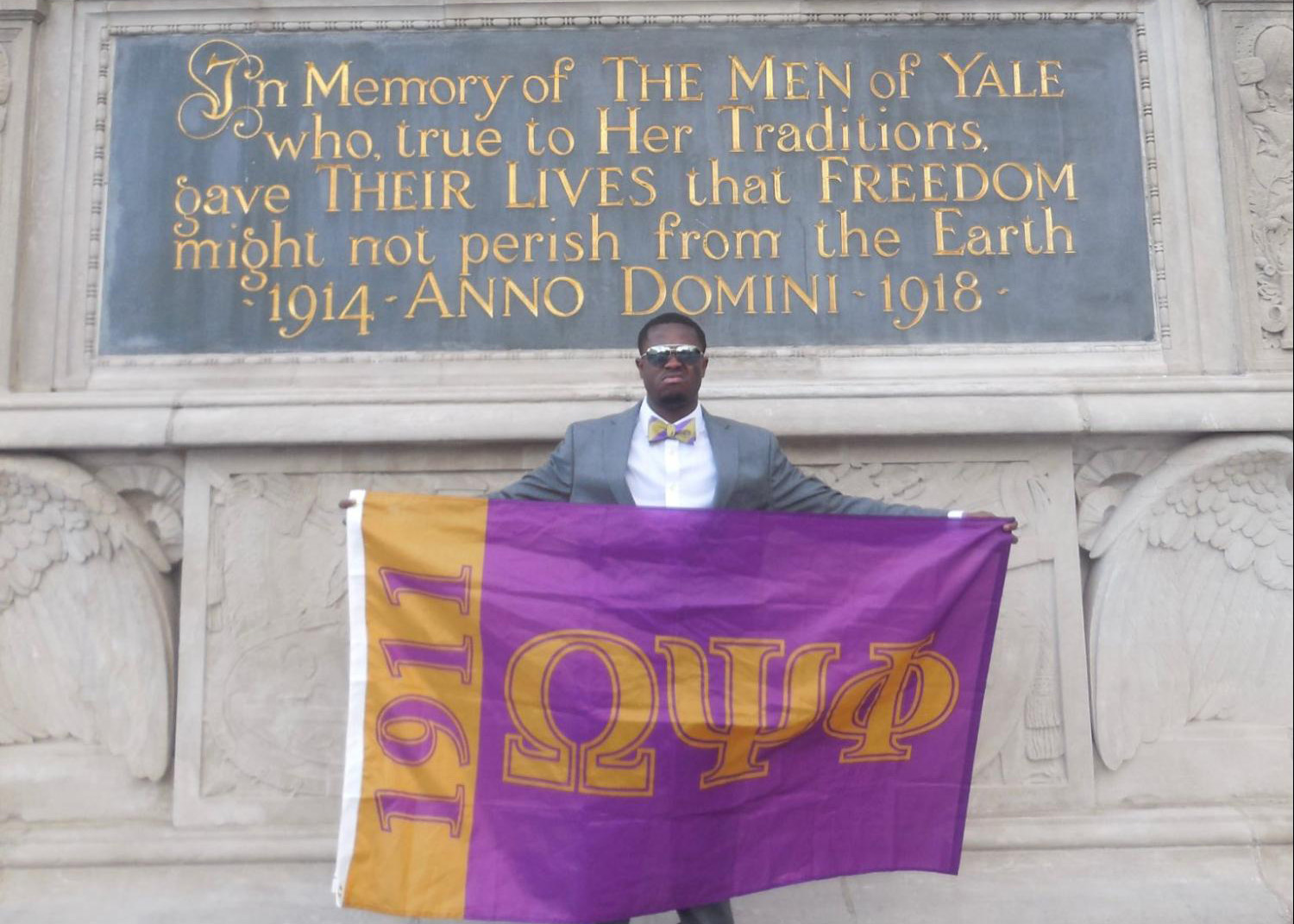Two Black fraternities at Yale survive on one member each
Alejandro Rojas ’26 and Keith Pemberton ’27 are both the singular members of their historically Black fraternities, groups they hope to keep alive at Yale’s campus.

Courtesy of Keith Pemberton
The Alpha Phi Alpha fraternity has 880 chapters worldwide and approximately 200,000 active members. At Yale, though, there is only one: Alejandro Rojas ’26.
Although his grandfather is an Alpha, Rojas, a biracial African- and Mexican-American, admitted that he wasn’t “super conscious” of the Divine Nine — nine historically Black Greek fraternities and sororities that comprise the National Pan-Hellenic Council.
“I just gravitated towards the idea of history and the legacy,” Rojas said. “It was a lot of learning about the things around me and being conscious of a deep history at Yale.”
The presence of the Alphas on Yale’s campus began around the 1970s, according to Rojas, and predates the founding of the Afro-American Cultural Center at Yale. In the 1980s and ’90s, the fraternity had nearly 20 members on the yard at the time.
The fraternity is also the oldest continuous Black organization on campus. Rojas has — singlehandedly — helped maintain that. The group is chartered under the citywide Eta Alpha Lambda, of which Rojas is president.
Such a history, Rojas said, has been difficult to uncover due to the University’s less-than-sufficient documentation of the fraternity’s presence on campus.
Pre-1970, many Black students at Yale didn’t live on campus and were registered in New Haven ledgers, rather than as Yale students, Rojas explained. Several members of his chapter weren’t identified because they weren’t displayed in yearbooks and class archives.
“A lot of our history has been lost because of the lack of documentation from Yale University,” Rojas said. “Fundamentally, it was an issue with whether or not Yale recognized the status of these students. I feel this responsibility to make sure that this history is honored despite how Yale might not have honored it in the past.”
He cited James Pennington, a formerly enslaved man who studied at the Divinity School at Yale in the 1830s but wasn’t recognized as a student until the University awarded him an honorary degree in 1848, as an example of this historical erasure.
Michael Morand, director of community engagement at Yale’s Beinecke Rare Book and Manuscript Library, wrote in an email to the News that the University has been working to address the gap in the history of Black Yalies.
Much of that work has focused on uncovering the history of Black people as faculty, students, and staff, Morand said.
Photographs of early members of Alpha Phi Alpha are now permanently housed at the Afro-American Cultural Center. According to Morand, ongoing archival work has already identified more than 300 Black Yale students and alumni from the 1830s through 1940, and researchers continue to add new names each year.
Morand said the project has drawn from student and alumni records, Yale Daily News archives, local and national newspapers, and books written by or about those early students.
Rojas’ goal, since becoming chapter president, is to uncover as much of the chapter’s history as possible, even venturing to archives at other schools, such as Cornell and Howard.
He believes that his existence as the sole member of a Black fraternity on campus is not unique, though. He said Brown and Harvard also only have one Alpha each.
“I don’t think a lot of students are aware of that nor do they have the same imperative to do so,” Rojas said. “I think our role is to encourage people to acknowledge our history in terms of denied history and in terms of Black history.”
Keith Pemberton ’27 shared Rojas’ desire to uplift his fraternity’s history. Pemberton is the only member of Omega Psi Phi on campus. The citywide Epsilon Iota Iota chapter was founded in 1922. Since then, the chapter has had approximately nine other Yalies cross. But before Pemberton, the chapter hadn’t had a Yale initiate in 15 years.
“What inspired me to do it is looking at the trailblazers: the first Black astronaut, the first Black governor, all of which are Omega men,” Pemberton said. “Being a history major, despite it not having a presence on campus, it was inevitable for me to be interested.”
He was also inspired by his father, who Pemberton said is a spring 1996 initiate of the fraternity.
In order to find a community, Pemberton said he frequently communicates with his brothers in New Haven to create visibility.
What stutters this visibility though, Pemberton believes, is how “discombobulated” inter-fraternity communication can be with other Black fraternities active on Yale’s campus, such as the Alphas and the Kappa Alpha Psi fraternity.
“It’s not as structured as we’d like,” Pemberton said. “It’s not just about maintaining members or constantly throwing parties, it’s about having people who believe in what each organization represents.”
Still, Pemberton hopes his legacy as the only Omega on campus is to open a window of achievement and scholarship for other Black men at Yale and throughout New Haven — a mission that aligns closely with Rojas’.
“We’re definitely not looking for people just to increase numbers,” Rojas said about both himself and Pemberton. “For us, it’s really important to have a certain quality of student who’s dedicated to honoring the history in the same ways that we seek to bring our own perspective to it.”
The Alpha Phi Alpha fraternity was first established at Cornell.







